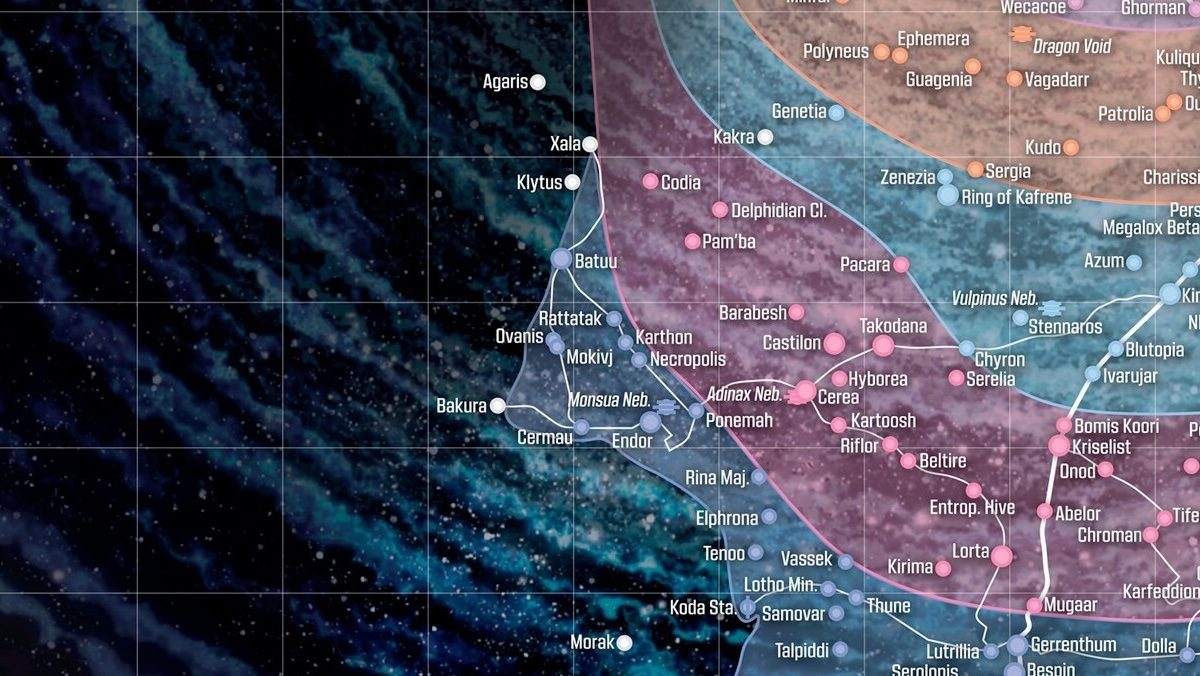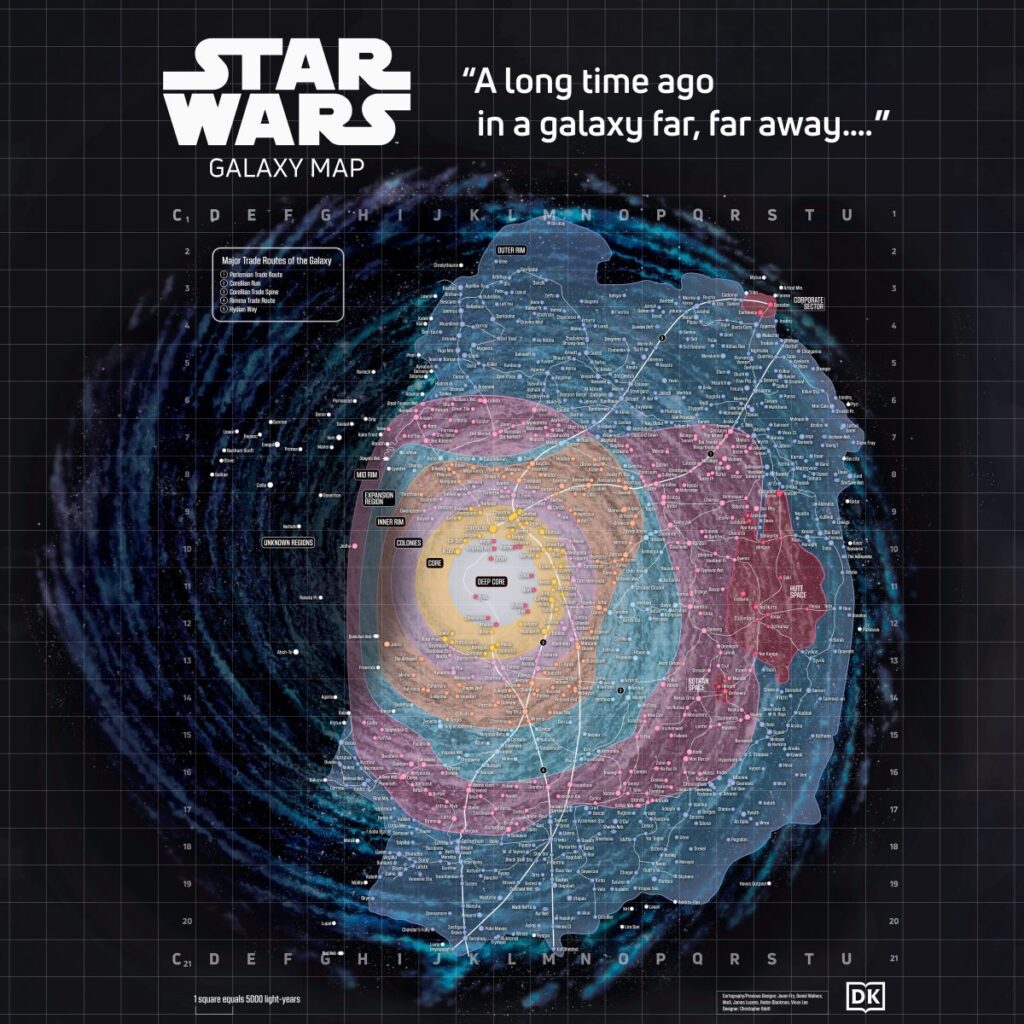The galaxy far, far away isn’t just, you know, far away. It’s also really, really big. It’s home to innumerable stars and planets inhabited by countless living creatures of every size and shape. The enormity of it all is basically impossible to comprehend. But Lucasfilm has now at least made it a little bit easier to figure out where its most important places are. Star Wars has released an updated digital star map showing the location of hundreds of planets from its gigantic universe.
In 2009, Lucasfilm released an online companion for Star Wars: The Essential Atlas. It has now updated that digital galaxy map for Star Wars fans to obsess over. While the studio notes that the galaxy far, far away “contains billions of stars and is home to trillions of beings,” this Star Wars map doesn’t include all of those worlds. It’s (thankfully) a lot more manageable to use. It includes the location of more than 500 planets that have played a role or been mentioned in films, shows, comics, books, games, and more.
Not every single planet Star Wars fans know about is included. Notably, Kamino, introduced in Attack of the Clones, is absent even though other worlds from the Unknown Regions made the cut. But this map does include five major trade routes and the various territories often referenced in Star Wars. If you’ve ever wondered why so many planets seem to be located in the Outer Rim, it’s because that place is huge. HUGE. Disney fans will also note Batuu really does sit on the galaxy’s edge in that infamous part of space. It’s also pretty close to Endor, the kind of fun little detail that makes this Star Wars map so exciting to study.

If you want to find a specific Star Wars planet, you can search the official list that goes with the map. And if you can’t find one you’re looking for, check back in the future. Star Wars says fans should bookmark the page because it will continue to update this online resource.
No amount of updates will make it possible to truly appreciate the size of the galaxy far, far away, but at least it will help us know just how far apart the most important planets are from one another.
Content shared from nerdist.com.

